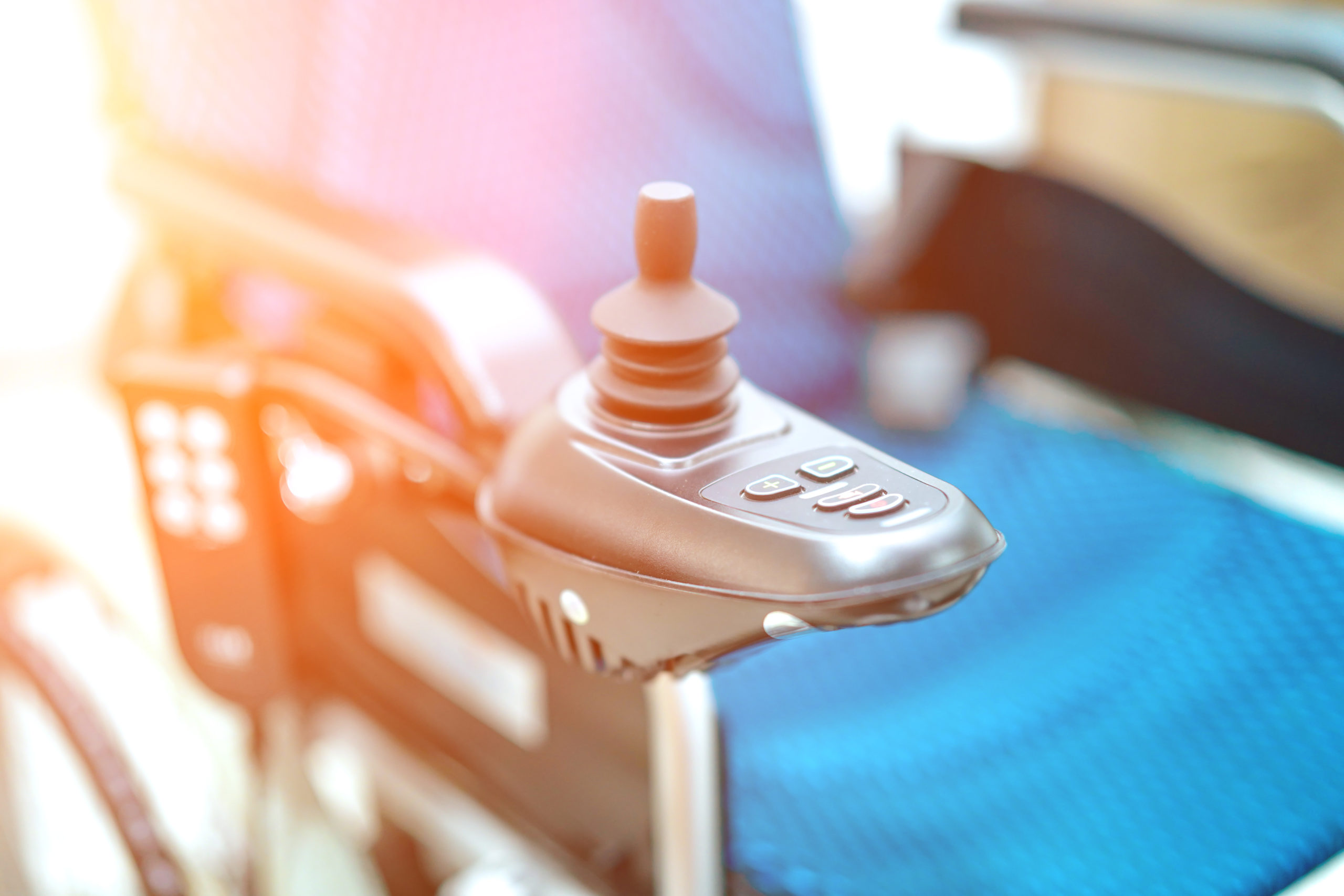How does it benefit an individual or society as a whole to wait until there is a significant health problem, before providing a therapeutic solution?
I have spent over 30 years working in the manufacturing end of the Complex Rehab Technology (CRT) industry, using the voice of the wheelchair user community as my compass. After all these years, it’s hard not to conclude that innovation and positive cultural change in this industry lags behind that of many other industries.
To shine the light on the lack of innovation and encourage the action of others to inspire change, I’m sharing my top 10 list of most-needed innovations. If we want to become an innovative and progressive industry, social norms, industry processes, and insurance models must change for the better over the next five years.
Here are the top changes I hope to see realized and implemented by 2025:
#10) 24-hour turnaround on routine wheelchair repairs
A common theme on user forums like CareCure and the late Mark Smith’s Wheelchair Junkie is criticism of equipment providers for the length of time it takes to repair a wheelchair (including battery replacements). This criticism is often misdirected. In many cases the requirements and bureaucracy of an insurance company’s authorization process adds days, if not weeks, to the repair cycle. A fundamental understanding of the urgency of repairs to wheelchairs is necessary within insurance companies before positive change will be realized.
#9) Philosophical change from “pay for treatment” to “pay for prevention”
Over my many years working at ROHO, I encountered countless individuals with medical conditions that caused them to sit for many hours during the course of a day, but due to a non-qualifying diagnosis (such as Alzheimers) were deemed ineligible for a specialty skin protection cushion, until they had actual trauma to their skin. By then the intervention of the several hundred dollar specialty skin protection cushion comes too late to prevent further medical complications, which frequently lead to lost wages and very expensive treatments (including flap surgeries which cost our healthcare system upwards of $60,000).
Waiting until there is skin trauma to provide the appropriate protection cushion means individuals are at higher risk for subsequent skin breakdown later on. Instead of denying equipment that is clinically justified, we should aim to prevent a costly health complication from occurring in the first place by spending a reasonable amount of money upfront.
#8) Insurance coverage for standing frames and seat elevators
There is significant clinical evidence that shows standing systems are valuable tools in treatment and health management for individuals with complex medical needs such as spinal cord injury, cerebral palsy, multiple sclerosis, and brain injury. Yet even in the face of this evidence, Medicare, Medicaid, and most private insurance companies still do not cover these needed devices.
The problem we must overcome for these products is that insurance companies are quick to see additional direct costs when they provide coverage for solutions that benefit consumers, and to date, they have been unwilling to consider these benefits. Learning how the industry fights these issues and how you can be more involved to drive necessary change in policy, is essential for innovation.
#7) Ability for consumers to pay for upgrades to the equipment order
The required billing codes for equipment include a broad definition of what is included within that code. This broad definition prohibits a medical equipment provider from billing the consumer the difference between the standard product and a product that has “upgraded” features or benefits that the consumer chooses to have and is willing to pay for out-of-pocket. This relates directly to Medicare policy, and is a head-scratcher since the policy change would only benefit consumers and not create any additional costs to the healthcare system.
Medicare and other insurance companies say that they do cover these higher-level products, but they will not pay any additional funds beyond the reimbursement for the base code, thus effectively preventing access to the desired upgrade.
The most obvious example of this is that Medicare does not allow an individual to pay out-of-pocket for a titanium upgrade on a K0005 ultralight manual wheelchair, thus removing access to a premium performance package that certain individuals desire and would willingly pay for.
#6) Eliminate Medicare’s “in-the-home” policy
This topic merits a blog of its own, and is another confounding Medicare policy that limits access to a class of wheelchair, or features of a wheelchair, needed by many users. By policy, Medicare (and many other insurance companies that follow Medicare policy) only pays for the class of wheelchair and features that are needed for mobility within the home. They do not consider mobility outside the home, which in many cases is the primary environment for the mobility need. So if you are a college student or work on a farm and you need a wheelchair that will hold up to the daily demands of those environments, expect an uphill battle to gain approval for the class of wheelchair that you require.
A notable exception to the above rests with state Medicaid agencies, where community access is considered in equipment decisions. As stakeholders in the CRT industry, everyone should advocate for Medicare to adopt Medicaid policy related to community access for mobility.
#5) Eliminate the 5-Year DME (durable medical equipment) replacement policy
A “one size fits all” mentality does a disservice to countless individuals when it comes to the replacement cycle for wheelchairs and related accessories. How can you have the same replacement cycle for a senior user and a college student? While needing to consider unnecessary “abuse” of the equipment, this policy should be restated to be based on demands of daily life for each individual.
#4) Hold airlines accountable for the handling and transport of wheelchairs, and advocate for a better on-board experience for travelers with disabilities
The improper handling and poor care of wheelchairs by airlines is well-documented, and a frequent topic of dissatisfaction expressed on user forums. The impact of this extends beyond just the costly equipment repairs that result – it discourages travel by individuals with disabilities due to anxiety over the experience and the real chance of a negative outcome.
Imagine flying to Orlando to visit Disney and Universal amusement parks, only to arrive in a broken wheelchair or lost seating component upon landing. This is too often the case in air travel today.
#3) Bring wheelchair battery technology into the 21st century
Where is the innovation in battery technology for power wheelchairs? While I’m far from an expert on batteries, you just have to look to other industries like automotive to see advancement in battery technology that results in smaller and more efficient power platforms. Is it the insurance model covering wheelchairs that stifles innovation in battery technology?
#2) Learn from other industries
Modern cars have advanced driving and safety systems that reflect the technology advancements of our generation. Collision avoidance, lane departure warnings, air bags, and cruise control are now expected standard features in new cars. Why are there not similar expectations for today’s power wheelchairs? Sadly, I suspect the answer comes down to the existing insurance model and policies for wheelchairs and the potential risks of diverting from the status quo.
The costs of innovations are not easily passed to the consumer like in the car industry. A company’s upfront investment for innovation can negatively impact short-term returns for shareholders. The government is not likely to increase budgets for Medicare and Medicaid systems and be the only stakeholder to take the risk to improve the status quo. The only way to realize this level of technology or innovation is if someone from within the industry (or even an outsider) decides that risk is the primary decision and instead builds a better, user-focused solution. Government agencies and insurance companies will certainly see both the user benefits and a decrease in other claims and will hopefully find a way to provide additional payments.
#1) CRT needs a separate benefit category within Medicare
Did you know that there is active federal legislation that, if passed into law, would protect your access to CRT equipment, which in recent years has been threatened by Medicare reimbursement cuts and negative policy changes? The proposed legislation is House of Representatives bill number H.R. 2408 sponsored by Representatives Sensenbrenner (WI) and Higgins (NY). You can learn more about this legislation and steps you can take to help drive it forward in Congress here. Every one of us needs to become advocates and let Congress know this legislation is imperative.
So how can you affect positive change? ADVOCATE and inspire others in your family and social network to advocate. You are the customer to your insurance company, so reach out to them and educate them on your needs. Meet with your elected members of Congress (they work for you!), educate them, and insist that they write or support legislation that will lead to positive change.
Reach out to industry manufacturers and share your ideas for innovations that would be important to your health and mobility. Join associations such as United Spinal and join their efforts for advocacy. We need a bigger bandwagon, so please jump on and be heard.














